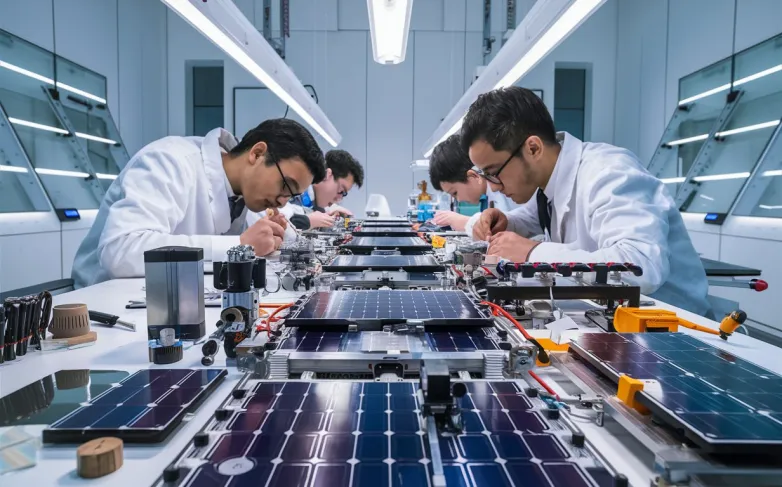Optimizing Guest Components for High-Efficiency Solar Cells
- Discover the groundbreaking method to boost efficiency in organic solar cells with innovative guest components. A game-changer in renewable energy technology.

A research group led by Prof. Ge Ziyi at the Ningbo Institute of Materials Technology and Engineering of the Chinese Academy of Sciences has proposed a novel method to design high-efficiency guest components for ternary organic solar cells (OSCs). The strategy aims to minimize non-radiative voltage losses and achieve excellent power conversion efficiencies (PCEs). The work was published in Advanced Materials, highlighting the importance of optimizing guest components in OSCs.
The researchers used density functional theory calculations to design and synthesize three asymmetrical non-fullerene acceptors (ANFs) with different electrostatic potential distributions. By introducing these ANFs as guest acceptors in a host system, they were able to improve the luminescent efficiency of the blend film and achieve a high PCE of 18.93% with a low voltage loss of 0.236 eV in ternary OSCs. This study provides a guideline for designing high-efficiency guest acceptors to enhance the open-circuit voltage in ternary OSCs, with potential implications for the development of single-junction OSCs with PCE above 20%.
How did Prof. Ge Ziyi's research team improve efficiency in ternary organic solar cells?
- Used density functional theory calculations to design and synthesize three asymmetrical non-fullerene acceptors (ANFs) with different electrostatic potential distributions
- Introduced these ANFs as guest acceptors in a host system to improve the luminescent efficiency of the blend film
- Achieved a high power conversion efficiency (PCE) of 18.93% with a low voltage loss of 0.236 eV in ternary OSCs
- Provided a guideline for designing high-efficiency guest acceptors to enhance the open-circuit voltage in ternary OSCs
- Potential implications for the development of single-junction OSCs with PCE above 20%
Also read

